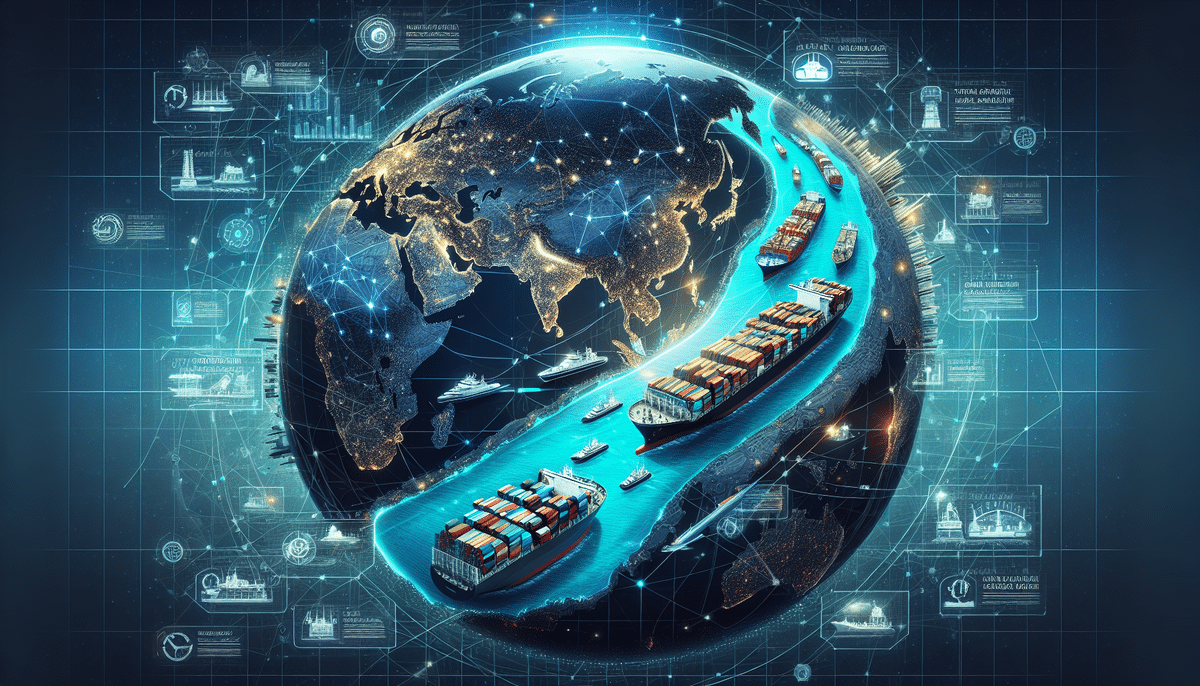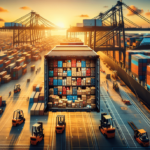Reminder: Suez Canal Backup Plan Is Essential
The recent challenges faced by the Suez Canal have underscored the critical need for a robust backup plan for this pivotal trade route. Connecting the Mediterranean Sea to the Red Sea, the Suez Canal accounts for approximately 12% of global trade, facilitating the movement of goods and commodities worldwide. The blockage caused by the container ship Ever Given in March 2021, which halted operations for nearly a week, resulted in significant disruptions across global supply chains, emphasizing the necessity for contingency strategies.
What Happened in the Suez Canal Crisis?
The crisis unfolded on March 23, 2021, when the Ever Given, a 400-meter-long container ship, ran aground in the southern segment of the Suez Canal. This incident led to a massive traffic congestion, with over 400 vessels delayed in transit. After six days, the vessel was successfully refloated on March 29, 2021, yet the economic repercussions were profound. According to the ShipScience Economic Impact Report, the blockage incurred losses estimated at $9.6 billion per day due to halted trade flows.
The obstruction not only inflated shipping costs but also created a shortage of containers, thereby increasing the prices of goods globally. Additionally, environmental concerns arose as the Ever Given was laden with over 18,000 containers, some transporting hazardous materials. Although no major environmental disasters occurred, the incident highlighted the imperative for enhanced safety protocols and emergency response mechanisms.
The Importance of the Suez Canal to Global Trade
Serving as a vital conduit between Asia, Europe, and Africa, the Suez Canal accommodates approximately 19,000 ships annually. By providing a direct route, the canal significantly reduces travel time and fuel consumption, saving the shipping industry millions of dollars. For instance, bypassing the Cape of Good Hope saves ships around 7,000 nautical miles.
Beyond its economic significance, the Suez Canal holds considerable geopolitical importance. Historical events, such as the 1956 nationalization by Egypt and subsequent military interventions by France, the UK, and Israel, illustrate the strategic value of the canal. Today, ongoing expansions aim to enhance its capacity, accommodating larger vessels and increasing traffic efficiency. However, challenges like piracy, regional political instability, and environmental threats persist, necessitating continuous diplomatic and operational vigilance.
Potential Risks of Relying Solely on the Suez Canal
The Ever Given incident brought to light the vulnerabilities associated with over-reliance on a single trade route. Disruptions can lead to extensive delays, backlog of vessels, and significant economic losses worldwide. To mitigate these risks, it's essential to develop and implement backup strategies that ensure the resilience of global supply chains.
- Diversifying Trade Routes: Investing in alternative pathways such as the Panama Canal, Arctic Sea Route, or expanding air freight capabilities can reduce dependency on the Suez Canal.
- Political Stability Monitoring: Continuous assessment of geopolitical dynamics in the region can help anticipate and prepare for potential disruptions.
- Infrastructure Investments: Enhancing infrastructure at alternative ports and routes ensures they can handle increased traffic if needed.
How the Suez Canal Backup Plan Works
The backup plan for the Suez Canal involves utilizing alternative routes to maintain the flow of goods during disruptions. Key alternatives include:
- Cape of Good Hope Route: While extending the journey by approximately 2,700 nautical miles, this route serves as a reliable alternative during emergencies.
- North American Route: Facilitating trade between Asia and North America via the Pacific Ocean, this path bypasses the Suez Canal entirely.
- Northern Sea Route: Connecting Asia and Europe along Russia's Arctic coast, this route is becoming more feasible with advancements in icebreaker technology.
Benefits of Having a Backup Plan for the Suez Canal
Implementing a backup plan offers numerous advantages:
- Continuous Trade Flow: Ensures the uninterrupted movement of goods, maintaining economic stability.
- Risk Mitigation: Reduces the impact of unforeseen disruptions, safeguarding against significant losses.
- Operational Readiness: Prepares the shipping industry to switch to alternative routes swiftly, minimizing downtime.
- Consumer Assurance: Guarantees that product availability and pricing remain stable despite logistical challenges.
The Challenges of Implementing a Backup Plan for the Suez Canal
Despite its benefits, establishing a backup plan presents several challenges:
- Increased Costs: Alternative routes like the Cape of Good Hope incur additional travel time and fuel expenses, potentially raising consumer prices.
- Infrastructure Requirements: Enhancing alternative routes demands significant investments in port facilities and navigational aids.
- Environmental Concerns: Longer routes may result in higher carbon emissions, necessitating sustainable practices.
- Coordination Among Stakeholders: Effective implementation requires collaboration between governments, shipping companies, and international organizations.
Countries That Depend Heavily on the Suez Canal and Their Backup Plans
Major economies such as China, Japan, and South Korea rely extensively on the Suez Canal for importing and exporting goods. These nations are proactively diversifying their trade routes to enhance resilience:
- China: Through the Belt and Road Initiative, China is developing infrastructure to connect with Europe and Africa via multiple land and sea routes.
- India: India is investing in the Chabahar Port in Iran to establish an alternative maritime corridor.
- Russia: Exploring the Northern Sea Route, Russia aims to capitalize on melting Arctic ice to create a shorter passage between Asia and Europe.
What Can Be Done to Ensure Smooth Traffic at the Suez Canal?
The Suez Canal Authority is implementing several measures to enhance canal operations:
- Canal Expansion: Ongoing projects aim to widen and deepen the canal, allowing for greater vessel capacity and reducing transit times.
- Advanced Technologies: Introduction of state-of-the-art navigation systems and more powerful tugboats to assist larger ships.
- Personnel Training: Enhanced training programs for canal staff to improve emergency response and traffic management.
- Collaborative Protocols: Working closely with international shipping organizations to enforce safety regulations and best practices.
The Economic Impact of Disruptions at the Suez Canal
Disruptions in the Suez Canal have profound economic implications. The Ever Given blockage resulted in estimated losses of $9.6 billion per day in global trade. Key impacts include:
- Delayed Deliveries: Significant postponements in the arrival of goods, affecting manufacturing and retail sectors.
- Increased Shipping Costs: Shortage of containers and longer routes inflate transportation expenses, which are often passed on to consumers.
- Supply Chain Disruptions: Interruptions in the supply chain can lead to shortages of essential goods, impacting various industries.
These economic setbacks highlight the critical importance of having effective backup plans to sustain global trade continuity.
Lessons Learned from the Suez Canal Blockage and How They Can Be Applied in Future Crises
The Suez Canal incident has imparted valuable lessons for the global shipping industry:
- Importance of Redundancy: Establishing multiple trade routes ensures that disruptions in one area do not cripple global trade.
- Preparedness and Planning: Developing and regularly updating emergency response strategies can mitigate the impact of unforeseen events.
- Stakeholder Collaboration: Enhanced cooperation among governments, shipping companies, and international bodies is essential for effective crisis management.
- Investment in Technology: Leveraging advanced technologies can improve navigation, monitoring, and response capabilities.
Alternative Trade Routes to Consider in Case of Future Suez Canal Disruptions
Several alternative routes can be utilized to maintain trade flows during Suez Canal disruptions:
- Cape of Good Hope Route: Despite adding approximately 2,700 nautical miles to the journey, it remains a reliable alternative.
- North American Route: Facilitates trade between Asia and North America through the Pacific Ocean, bypassing the canal entirely.
- Northern Sea Route: An emerging option that connects Asia with Europe via Russia's Arctic coastline, becoming more viable with climate change-induced ice melt.
Each alternative route presents its own set of challenges, including higher costs, longer transit times, and environmental considerations. Strategic planning and investment are crucial to effectively implement these alternatives.
The Role of Technology in Resolving Shipping Disruptions at the Suez Canal
Technological advancements play a pivotal role in mitigating and resolving shipping disruptions:
- Automation and AI: Enhancing route optimization and predictive maintenance to prevent accidents and delays.
- Big Data Analytics: Providing real-time insights into traffic patterns and potential bottlenecks, enabling proactive management.
- Blockchain: Increasing transparency and security in shipping transactions, reducing risks of fraud and theft.
- Advanced Navigation Systems: Implementing state-of-the-art navigation aids to improve vessel maneuverability within the canal.
The Suez Canal Authority is at the forefront of adopting these technologies, including the deployment of a new navigation system and more robust tugboats to handle larger ships efficiently.
Experts' Opinions on How to Address Shortcomings in Current Backup Plans for the Suez Canal
Industry experts have proposed several strategies to enhance existing backup plans:
- Route Diversification: Expanding the number of alternative routes to provide more options during disruptions.
- Infrastructure Enhancement: Upgrading ports and terminals on alternative routes to handle increased maritime traffic.
- Adoption of Autonomous Ships: Utilizing unmanned vessels to improve efficiency and reduce human error.
- Smart Port Technologies: Implementing IoT and automation in ports to streamline operations and manage higher volumes seamlessly.
These recommendations aim to create a more resilient and adaptable global shipping network.
What Does the Future Hold for Shipping Through the Suez Canal?
The future of shipping through the Suez Canal is set to evolve with ongoing investments and technological advancements:
- Capacity Expansion: Continued widening and deepening projects to accommodate larger vessels and increase traffic efficiency.
- Technological Integration: Adoption of autonomous ships, smart port systems, and advanced monitoring tools to enhance operational capabilities.
- Environmental Sustainability: Initiatives aimed at reducing the carbon footprint of shipping activities through cleaner fuels and greener technologies.
- Enhanced Cooperation: Strengthening collaborations among international stakeholders to ensure the canal's reliability and security.
The lessons from the Ever Given incident have propelled the industry towards greater preparedness and innovation, ensuring that the Suez Canal remains a resilient and indispensable artery for global trade.






















